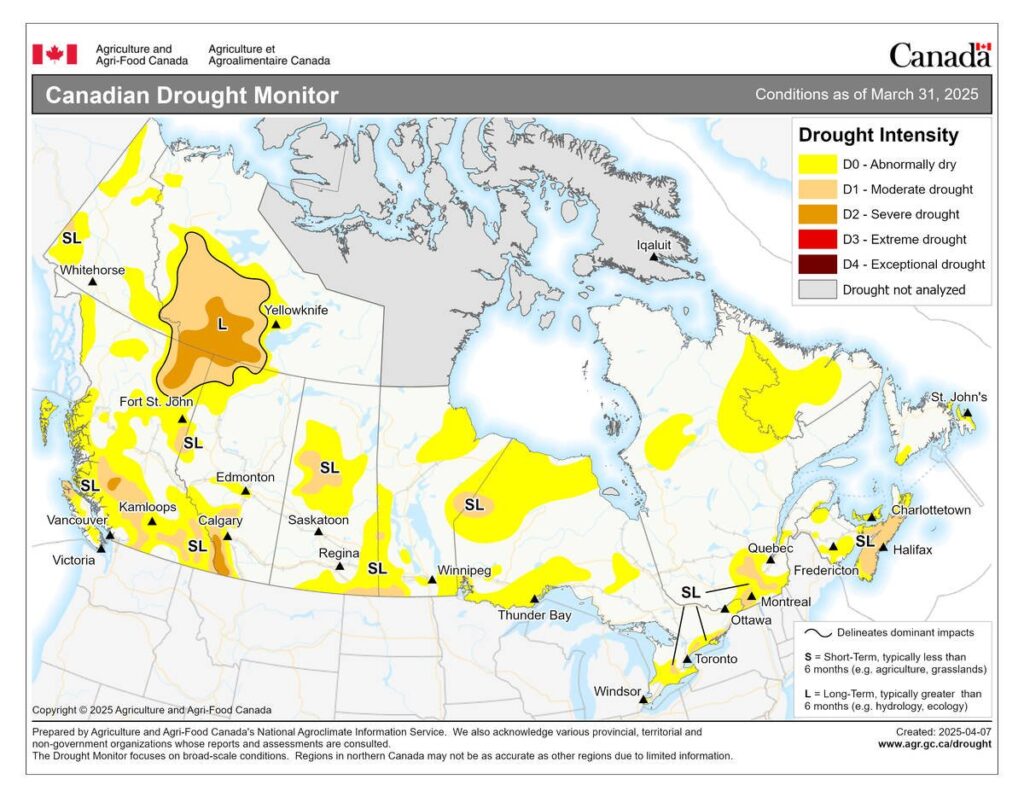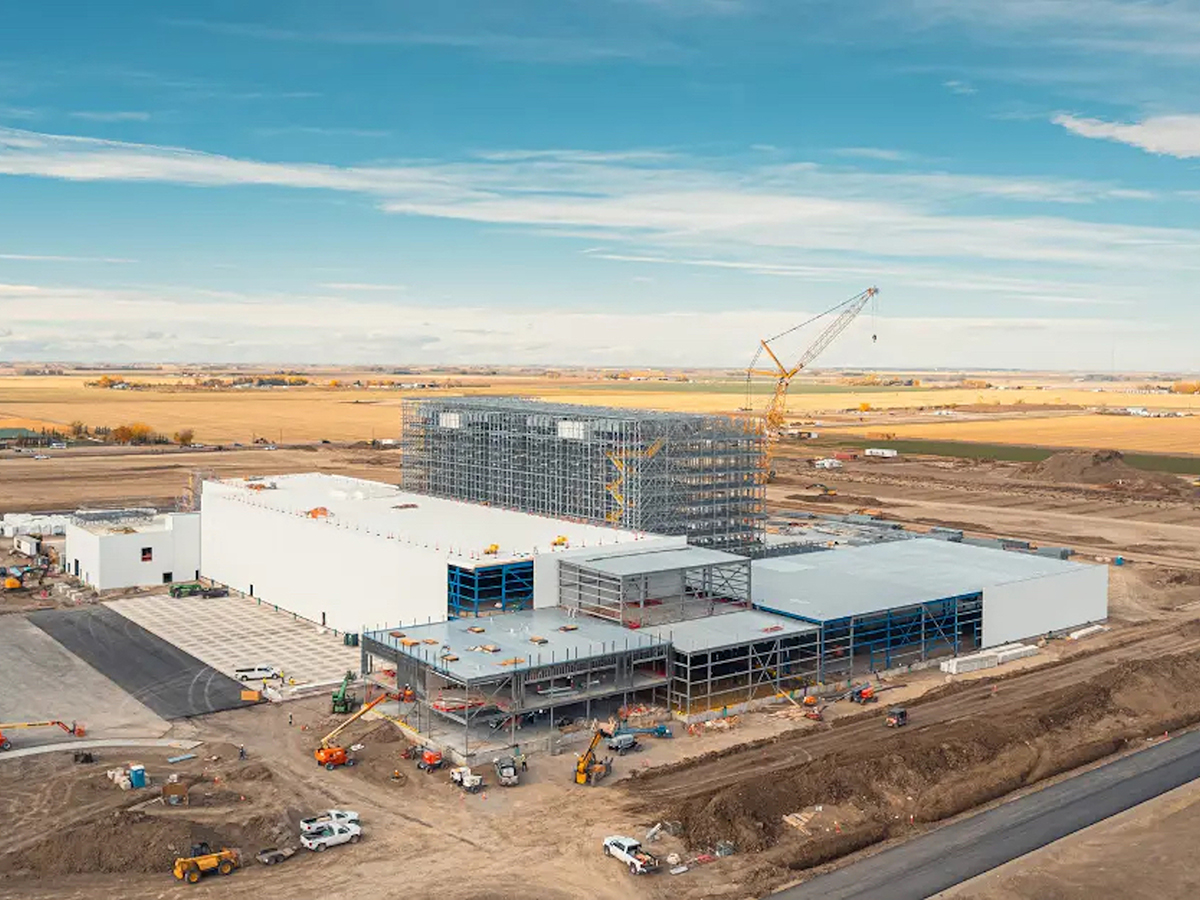Soil-moisture looks good as seeding begins

SASKATOON — Soil moisture maps are refreshingly different heading into spring seeding on the Canadian Prairies this year.
“We’re actually looking really good,” said Trevor Hadwen, agroclimate specialist with Agriculture Canada.
“We’ve got more moisture in the soil than we’ve had for many years and drought conditions are very limited.”
Read Also


Automated cold storage to help Alberta agriculture
A Dutch firm says its first advanced automated cold storage warehouse in Canada is getting closer to completion, and will revolutionize the southern Alberta agriculture corridor by boosting sustainability in the supply chain.
The March 31 drought map shows there is only one small sliver of D2 or severe drought along the eastern slopes of the Rocky Mountains in southern Alberta.
And there is no D3 (extreme) or D4 (exceptional) drought anywhere on the map.
“We’re not seeing a whole lot of flooding, but we’re also not seeing a whole lot of significant drought,” he said.
The sliver of D2 drought on the eastern slopes of the Rockies is worrisome because that region supplies water for reservoirs in southern Alberta.
“Refilling some of the major reservoirs like the Oldman and the St. Mary Reservoir is somewhat of a concern right now because they have been quite a bit below normal throughout the winter period,” said Hadwen.
But other than that, the overall picture looks very encouraging.
The vast majority of the Prairie region has soil moisture in the range of 85 to 200 percent of normal.
However, there are some pockets where the rating is in the 40 to 85 percent range, including a large swath surrounding either side of the Saskatchewan/Manitoba border, a small area southwest of Regina and another small area southwest of Calgary.
Environment Canada meteorologist Alysa Pederson said the forecast for the April/May/June period calls for slightly below normal precipitation across the Prairie grain belt region.
But she added that spring forecasts are “pretty challenging” due to thunderstorm activity.
“One rainfall event can really flip the switch on whether we’re above normal or below normal for precipitation,” she said.
There are no real big weather drivers this spring because the world is exiting a La Nina system and heading into an ENSO-neutral phase.
“While sometimes we do have something to hang our hat on, this year we don’t really,” said Pederson.
The best guess is that rainfall for the three-month period will be 10 to 25 millimetres below normal, or about 10 to 15 percent below the usual amount.
Hadwen said slightly below normal spring rainfall would not be that troubling given the good soil moisture conditions. In fact, in some regions it might be welcome because the ground is a little too wet.
But it could be worrisome if the dryness spills over into summer.
“Based on the climate cycles, we could see the tap turned off as we move into July,” he said.
Source: producer.com


